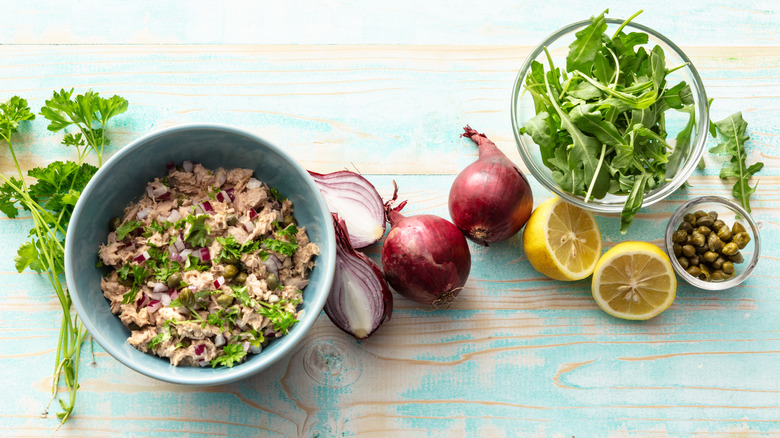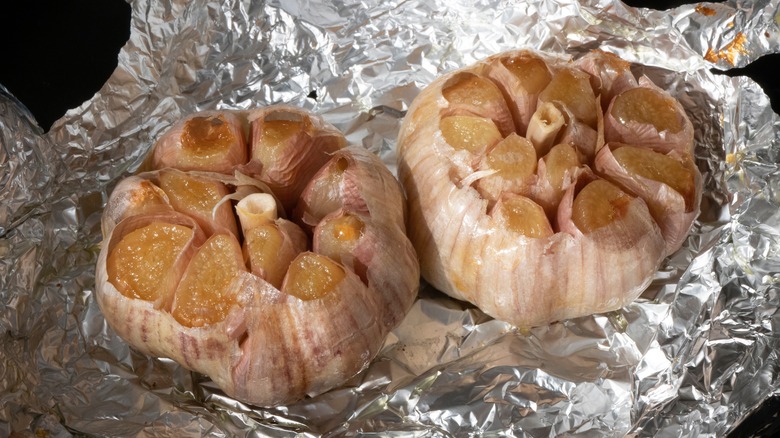The Roasted Ingredient That Seriously Upgrades Tuna Salad
There are so many ways to take tuna salad to the next level, from adding spicy gochujang or herby artichokes to incorporating crunchy pieces of sweet, fresh apple. If you really want to amp up the rich flavor, it's worth adding some garlic. But if you think that raw garlic tastes too pungent and could easily overpower the other milder ingredients, then the key is to roast it first.
Just like how cutting garlic in different ways affects the taste, various methods of cooking it also change the flavor. The characteristic taste and smell come from a molecule in the garlic called alliin that, once the clove is chopped, reacts with an enzyme known as alliinase to produce another molecule responsible for the flavor. But when it's roasted, the heat transforms the alliin into new molecules that are bigger in size before they come into contact with the alliinase. This gives the garlic a much milder and sweeter taste, which works especially well with fish such as tuna.
As well as mellowing the flavor, roasting garlic gives it a much softer and more spreadable texture, too. This consistency makes it easy to incorporate into tuna salad — whether you want to mash the soft cloves directly into the fishy mix or use them to make a rich tangy dressing or creamy, garlicky mayo. And provided you follow a few easy but important steps, the process of roasting the garlic is incredibly simple to do at home.
How to roast garlic for flavorful tuna salad
The easiest way to roast garlic is to use the full bulb rather than breaking it into individual cloves, which means there's no fiddly peeling or mincing involved. Simply slice off the top part of the bulb, so you can see the cloves within, place it on foil, and drizzle the cut-side up with extra virgin oil — this will produce a tastier result plus a jammier texture. Seal the foil package, and roast it on a rack inside a baking sheet, which helps to prevent the garlic from becoming scorched and bitter-tasting. It'll take around 45 minutes to an hour at 400 degrees Fahrenheit — stick a cake tester in to check it's tender, but be careful unwrapping the foil as it will be hot.
If you're making mayo-free tuna salad with hummus, add roasted garlic when blitzing the creamy chickpea spread for extra sweetness. Alternatively, blend roasted garlic cloves with olive oil, red wine vinegar, olives, and anchovies to make an umami-rich tapenade — delicious stirred through tuna salads with pasta.
If you've got leftovers or want to prep ahead, it's easy to store roasted garlic in the refrigerator. It will keep for four days in an airtight container, whether peeled or unpeeled. Or put the peeled cloves in a container with olive oil, and they will last for a week. As a bonus, you'll also have a robustly flavored oil — another great addition when dressing tuna salad.


